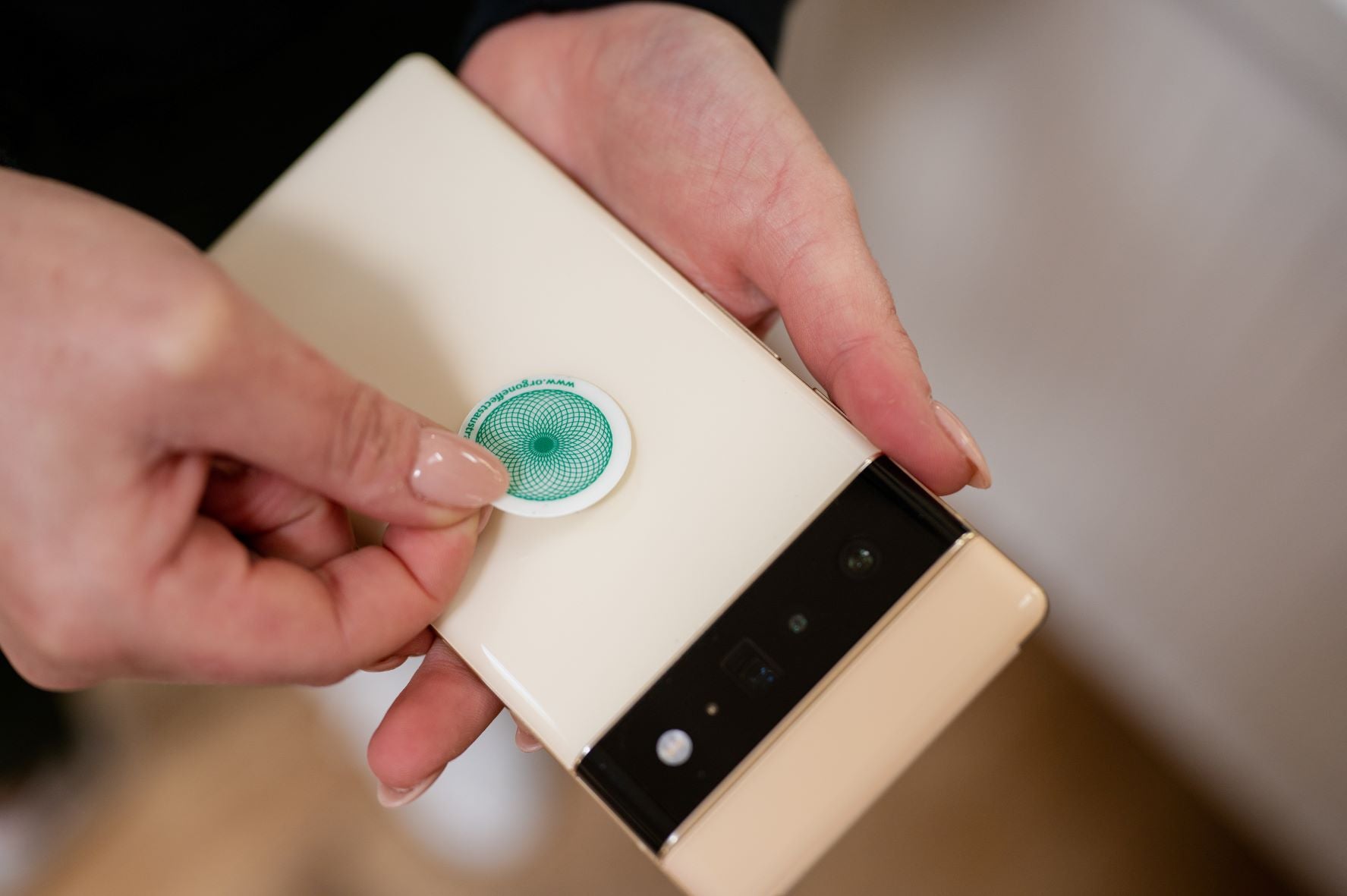5G Tower Locations Near me

It's happening in communities all across the country, mysterious orange pipes are popping up on the edge of town stamped with the words fiber-optic. Homeowners worry they'll be the first in the area to have 5G cell service. The FCC recently passed rules allowing 5G towers to go up with only minimal community approval. Verizon and AT&T say 5G is almost a hundred times faster than 4G and worth the investment. But for 5G speeds to be so fast, cell phone companies are going to have to put up tens of thousands of mini-towers outside of stores, restaurants, and maybe even on a telephone pole right outside your home.
In Florida, 5G transmitters are hidden in fake palm trees, in Arizona they're in metal cactuses, in Colorado phony evergreens and they all need to be connected with fiber lines. Homeowners worry many towers might end up outside their bedroom. It is believed the cell towers will be anywhere between every three to ten houses. There are environmental studies raising concerns about tower radiation up close. There are decades of research that have already proven that it's harmful.
In some communities, homeowners are joining petitions to fight 5G towers. Even some local children are joining the fight but local officials everywhere are running into brick walls trying to regulate the 5G rollout. FCC rules give them just weeks to challenge an installation work order and County engineers noted it's tough even finding out who's behind the installations. So how do you find 5G cell tower locations near you, so you can avoid them and reduce your exposure as much as possible?
Where Will 5G Towers be Placed?
In cities, erecting huge masts is an impractical solution. Even if a local authority has agreed to such an action plan, the focus on urban connectivity will be on capacity and speed rather than coverage. Compaction, therefore, has priority for operators. 5G networks powered by mmWave spectrum require the provision of hundreds of small cells that can deliver the ultra-low latency and reliable connectivity required for business and industrial applications such as virtual reality (VR) and mass IoT.
Existing cell towers are being redesigned to accommodate 5G capability. They will continue to be the basis of the networks. New towers are also being explored, and landowners and property owners are receiving requests to build new towers to expand existing coverage. However, with the limitations of the larger towers, the smaller cells will start popping up in the United States. Small cells vary in range, power, and size, but are generally compact. Telecommunications companies are competing to be the first to expand these small cell towers into big cities. Adding these small cells in densely populated urban areas can remove gaps in coverage. So where will these 5G towers be placed?
Some legislation has been proposed and in certain cases passed to prevent local governments from regulating these installations on public properties. This means that public buildings, power poles, and traffic lights can be sites for small cells. It also means that these small cells, or cell phone towers, have limited revenue, which reduces the amount of money the city can receive for the devices. Affected residents and citizens are taking note. Concerns include risks to health, privacy, and safety, and general aesthetic concerns about a community's landscape. Some cities are trying to reject these proposed cell towers in order to protect residents from these factors and other unintended negative consequences that could be linked to the growth of 5G.
It is also claimed that some local authorities are prioritizing direct rental fee income over the potential long-term social and economic benefits of 5G connectivity. This is particularly true for smart city applications, and the situation is made worse by the fact that some city councils have given an operator exclusive access to a single operator.
Do I Have 5G in My Area?
A 5G coverage map from the maker of the popular Speedtest.net application, Ookla, offers a detailed description of which 5G networks are active in a particular location from a particular network and whether that coverage is commercially available or limited. How to track with Ookla map:
1: Go to Speedtest Ookla 5G Map from your browser.
2: Drag the coverage map to locate the country you are interested in.
3: Click on the bubble to see the areas with 5G coverage and from which provider.
4: Use the + command to zoom in on the map and click on the bubble again for more detailed information, such as: if there are multiple cities in a country with different 5G networks active. You may need to zoom in to find certain locations in certain cities.
More than 300 5G implementations around the world are currently registered on the map. Ookla says it will update its tracking map each week using verified public sources (such as an advertisement from a network operator) and Ookla's data obtained from people using the Speedtest.net application to bring it up to date in 5G coverage areas.
How do I Find Cell Towers in My Area?
With many providers implementing 5G, you may be wondering how far the closest 5G tower is from your home and if you can access the faster 5G data speeds you expect. Before you start looking for towers, you need to find out if 5G is near you. There are several ways to find a 5G tower near you. Below are some of the newer and easier-to-use resources we've found to help you find 5G tower and 5G coverage locations near you. It may be better to check all of them, as none are updated in real-time.
Ookla 5G Map
We found the Ookla 5G interactive map to be one of the easiest tools to use to find a 5G tower near you. We'll explain this below.
The first thing you see when you access the interactive map is a flat world map with locations marked with 5G.
Also, you can filter on the following types of "delivery" to narrow your results:
Commercial Availability: There is currently an active 5G network in this area and users can purchase devices
Limited availability: There is a 5G network in this area. However, the devices are only available to certain users, e.g. a certain network operator, industry, or sector.
Pre-Launch: The 5G infrastructure (cell towers) are installed, but the service is being tested or isn’t available yet to the public.
Here are the steps to find a 5G tower location:
- Uncheck all filter options and just leave ‘commercial availability’ checked as this will show you where 5G is currently up and running.
- Next, zoom in on where you want to check for 5G coverage. For example, let's say you live in California. Just keep double-clicking your mouse to zoom in on that area or use the - and + keys at the top left of the screen.
- Then click on the numbered point to see who the 5G operator is in that area.
- The next step is to see exactly which areas within your city have 5G service. This is vital because unlike 4G which covers a larger area, 5G works differently as mentioned earlier. Therefore, even if it is present in a city, it does not mean 5G coverage spans the entire city. To dig deeper into the areas, simply pick a carrier and find their coverage map.
You can also access a full list of all cell phone towers within two miles of your location through the AntennaeSearch website. The locations of the towers are assigned on Google Maps. The best thing is that for licensed cell phone towers, legally correct registered addresses as well as informative statistics about the height of the tower, the transmission frequencies, the date of construction, its owner, and operator are provided. However, this location map works in all browsers including the more privacy-centric Firefox, as it can sometimes take a long time for this busy website to respond. The map shows the free version of Google Maps with a watermark.
Cellular Maps is another great resource for tracking the 5G launch. Several 5G maps are displayed here, all of which are broken down by network operators. The only advantage of the Cellular Maps site is that it differentiates between high and low band (also called millimeters) 5G signals. This can be helpful when trying to find individual cell towers as it will give you an idea of what to look for. With millimeter signals, for example, many small transmitters have to be placed in a small space, as the signal can only travel short distances. They are located in existing infrastructures such as power poles. On the other hand, low-band towers look like more traditional cell towers.
AT&T 5G Coverage Map
Enter your zip code to see if you are in the range of AT&T 5G coverage. You can also explore and see which cities have 5G coverage currently.
T-Mobile 5G Coverage Map
Use your current location or enter your zip code to find T-mobile's 5G coverage.
Verizon 5G Coverage Map
First, choose the city you live in or the one closest to you. Then the locations where “5G Ultra Wideband” is available becomes visible near the main attractions and different areas of the selected city.
Sprint 5G Coverage Map
Type in your address to see if you’re in a Sprint 5G covered area. Also, you can see a list of cities where 5G is available here.
A combination of Cell Phone Maps, specific carrier website maps, and Ookla provides an effective way to get a better picture of 5G in your area.
How to Find 5G Towers Near Me
Once you've checked the coverage maps and found 5G is near you, it is time to locate the towers. The thing to note here is that you are mainly trying to find millimeter towers, the small cells that are scattered around the neighborhoods. While it is true that 5G in all its forms carries dangers, it is the millimeter frequencies that worry many experts. Mid and low-band towers send out cellular frequencies the same as 3G and 4G, whilst millimeter waves are higher.
This difference in frequencies makes it so difficult to find 5G cell towers. You can't use a traditional EMF multimeter because most of them can't detect such high frequencies. You must be able to read frequencies between 24 and 39 GHz to keep track of a tower with a counter.
At the time of writing, a spectrum analyzer would be the best option for a commercially available device that can detect millimeter frequencies. Anritsu Field Master can detect cellular frequencies from 9 kHz to 54 GHz, thus millimeter waves are in this range. A spectrum analyzer allows you to easily keep up with nearby 5G towers by simply walking around and taking measurements. If you can find frequencies in the 24-39 GHz range, then you are likely near a 5G tower.
Don't worry if purchasing a spectrum analyzer is not a viable option for you. There are other things you can do to find towers in your neighborhood. On the one hand, only a limited number of providers offer 5G broadband. For example, T-Mobile targets low-band towers due to its range, while Sprint uses medium frequencies. If you're worried about millimeter waves, look out for US providers AT&T and Verizon.
AT&T does not have a solid 5G coverage map on its website. You can find more detailed AT&T coverage maps on the Cellular Maps website, but these aren't neighborhood maps yet. To find out if there are AT&T millimeter-wave towers in your location, you may have to zoom in on the Ookla map as much as possible. You can't see the exact tower locations, but you can see which blocks are covered. There is definitely a tower nearby if your block has 5G coverage.
Verizon offers a detailed 5G coverage map on its website. The official coverage map shows a list of cities. Once you have determined your neighborhood is covered, the next thing to do is locate the towers. You can walk around your neighborhood looking for antennas attached to existing structures such as roofs, utility poles, and power poles. In certain areas, they are designed to fit, while they stand out in others.
How to Monitor the Growth of 5G
Monitoring the growth of 5G is important if you want to be ready for when it comes to your area. This is a fast-growing technology and operators are rapidly widening their coverage. If your region does not have 5G coverage, it is only a matter of time. Even rural areas are probably to be interconnected, at least with low-band technology.
For this reason, it is important to remain vigilant if you are currently unaffected by the location of a 5G cell phone tower. As mentioned above, the Ookla map is updated every week. Check if 5G reaches your area at least every two weeks. It will probably appear first during the preliminary implementation phase.
What Can You Do to Prepare?
Preparing for 5G can be tasking. It is unlikely that you can stop a tower from reaching your area, but that doesn't mean you can't do anything. A starting point is to stay active in your local government and speak about your concerns at city council meetings. Some cities have spoken out against 5G, and while the FCC has severely curtailed cities' options, more elected officials need to listen as more people raise their concerns. If you find that a tower is approaching you or if you find that a tower near you is uncomfortable, let your town or city officials know. If you can't schedule a meeting, write at least one letter or make a phone call.
Aside from talking, there are things you can do to keep your home safe. Using a Geoclense Orgone Negative Ion Generator is one way to protect yourself from the harmful effects of 5G. This home harmonizer consistently generates healthy beneficial negative ions which work by harmoniously neutralizing your entire property and home all the way to its boundaries, counteracting each one of these destructive energies such as electromagnetic frequencies and radiation.
Another investment worth making if you are near a 5G tower is buying the Dome Schumann Resonance Orgone Generators. These highly protective Orgone accumulators are beneficial for neutralizing and harmonizing smart meters and Geopathic stress, as well as other forms of electromagnetic radiation, electromagnetic fields, and electro-pollution.
Purchasing an Orgone Shell Necklace can also protect you against a 5G cell tower nearby. The necklace works by generating Negative Ions which cancel out harmful Positive Ions. It provides you with complete defense against electromagnetic radiation, electromagnetic pollution, and all varieties of destructive and dangerous energy. This excellent Orgone Shell Necklace delivers you with ten meters (for 32 feet) of personal space and protection from electromagnetic fields (EMF), radiation and all forms of detrimental Positive Ions.
The Quantum Orgone Energy Pendants is another way to protect yourself from nearby 5G cell towers. The pendant generates healthy life-giving Negative Ions and works continuously to eliminate or cancel out hazardous Positive Ions, which makes these radiation protection pendants very effective and totally unique. The incredible EMF protection provided by these Orgone Pendant necklaces is very distinctive. Orgonium Orgone technology creates two positive sided pendants, getting rid of the dangerous effects of negative polarity against your body which switches off glands, organs, and muscles.
We recommend using the Phone Computer Bluetooth WiFi Radiation Protection to shield you from nearby 5G cell towers. This highly effective EMF protection device offers you and your family with maximum radiation protection, while also preventing the harmful effects of DNA damage and the formulation of brain tumors. It works in a far superior way to any shield can. They are designed to eliminate radiation emissions by neutralizing and harmonizing the effects of this harmful energy, rather than blocking or shielding them. These create a healthy life-force chi by constantly generating beneficial healthy Negative Ions.
It is also important to note that many existing elements of EMF protection are dedicated to lowering RF frequencies and ELFs. When buying something to protect yourself from 5G signals, ensure it can protect you from those higher frequencies. It might be worth buying something that will protect you from 10 MHz to 6 GHz if you want to reduce your overall exposure to EMFs but don't protect you from millimeter waves.
Conclusion
5G technology has exponentially grown in the past few months and there are many signs this trend will continue into the foreseeable future. It seems possible and very likely that 5G will soon reach the popularity and reach of 4G cellular services. While this could mean a lot of exciting technological advances, it could also mean an increase in 5G-related health issues.
To protect yourself, it is important to know if 5G towers are in your area and if so, what type. Mid and low-band cell towers are worrying, but not as much as high-band millimeter cell towers. It is these millimeter frequencies that may have been linked to massive bird deaths and other bothersome side effects.
The steps we have listed in this article are currently the best way to determine if there are 5G cell towers in your area. As 5G technology becomes more widespread, it is expected that it will be easier to track the position of towers. In the meantime, regularly check existing websites to see if a 5G tower is coming to your area.






